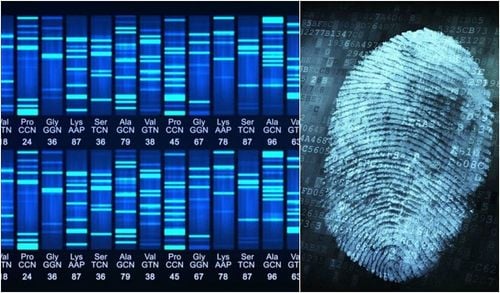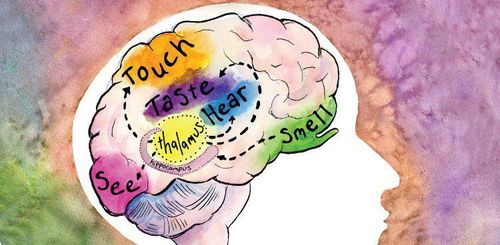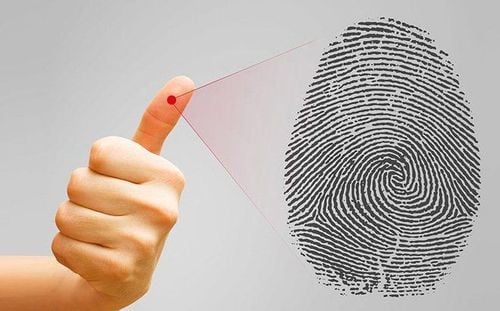This is an automatically translated article.
Fingerprint is a unique characteristic of each person, used for identification and criminal investigation purposes. Scientists past and present are still looking for mysteries surrounding fingerprints. Let's learn more about fingerprints in the following article.
1. Why do people have fingerprints?
In 1910, Thomas Jennings was on the run from a murder, however, his fingerprints were clearly left on the railing of the outside of the house at the scene of his crime. Jennings' fingerprints were used as evidence in criminal investigations and he was convicted of murder in 1911. This was the first time fingerprints were used in an investigative case.
Since then, fingerprints have been considered an important piece of evidence in forensic investigations. Fingerprint identification marks are so well-suited to the task of detecting criminals, that it is almost seen as the main reason for the existence of this concept. So, why do we have fingerprints?
Researcher Roland Ennos, professor at the University of Hull in the UK, said: "Thanks to fingerprints, we can have a firmer grip or increased tactile perception. These are two different opinions about fingerprints".
Professor Ennos has spent part of his research career investigating how fingerprints help us grip more tightly. The friction between our hands and the surfaces we touch is achieved by the microscopic grooves and crests of the fingerprints, giving us a tighter grip.
One proof of this theory is that fingertips can act like rubber tires on a car, they have a flexible nature that allows them to conform to the surface they come across. In tyres, this flexibility is combined with the treads of the tire, which enlarges the surface area of the tire, which in turn also increases friction and traction. Ennos wanted to test this idea with a lab test.
To find out how much skin was touching the glass, the researchers pulled a sheet of perspex (a clear and tough plastic) through their fingers, the force varying depending on how much and how much ink they used. Fingerprint.
Surprisingly, these experiments showed that "because the grooves are not interconnected, the actual contact area is reduced by the fingerprint," says Professor Ennos. However, this does not exclude the possibility that fingerprints can help to stick to other surfaces. For example, fingerprints can help us grip surfaces in wet conditions, as well as the water retention grooves on car tires.
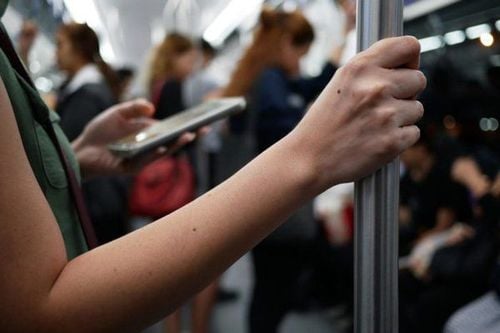
Dấu vân tay có thể giúp chúng ta bám chặt các bề mặt.
But some other opinions say that: Fingerprints have a role in tactile support. Biologist and physicist Georges Debrégeas - Sorbonne University - Paris, found out why people have fingerprints and decided to learn about the role of fingerprints in touch. In response to mechanical stimuli such as touch, our fingers have four types of mechanisms. Mr. Debrégeas was particularly interested in a particular type of mechanism - Pacinian corpuscles (tactile receptors in the skin) - which occur about 2mm below the surface of the skin at the fingertips.
With small vibrations having a frequency of exactly - 200 Hz , this mechanism in particular becomes more sensitive and that is why our fingertips are extremely sensitive. Mr. Debrégeas wondered if fingerprints would enhance this sensitivity.
He and his colleagues designed a biotactile sensor to learn more about this problem. Sensors will detect vibrations similar to the way Pacinian corpuscles do, the machine is designed to resemble the structure of a human finger. One device is designed to be very smooth and another has a rough pattern on the surface that mimics human fingerprints. The device has a rough surface that offers a fascinating discovery when moving over a surface. Pacinian corpuscles are very sensitive to it because the ridges on the sensor amplify the precise frequency of vibrations.
This device shows that our fingerprint will transmit these precise vibrations to sensors below the skin through simulated activity for human fingers. To conclude, fingerprints increase our tactile sensitivity by amplifying information in detail and clarity. According to experts, the nature of the signals can be completely changed when fingerprints are present.
Human hands are decisive tools in finding food and eating food, hands also help us explore the world. We can sort food, avoid spoiled or infected food thanks to the sensitivity of our fingers.
According to Debrégeas, fingerprints can serve the goal of increasing touch and grip. Because we have this delicate touch, we are very good at manipulating and handling things. This is the constant feedback loop between what we touch and what we feel.
For example, to maintain a grip, you need to be able to detect a change in the surface of something with sensitive fingertips in case it slips out of your hand while you're holding it.
If something slips out of your hand while you are holding it, you need to be able to detect a change in its surface with sensitive fingertips to maintain grip. So it's possible, Mr. Debrégeas said, that touch and precise grip do develop together.
Professor Ennos again suggested that fingerprints can prevent blistering. The fingerprints help prevent blistering, while still allowing the skin to stretch at angles, so that the skin maintains contact.
In fact, the important role of fingerprints in the investigation and identification of criminals cannot be denied. However, until now, why humans have fingerprints is still an unanswered question.
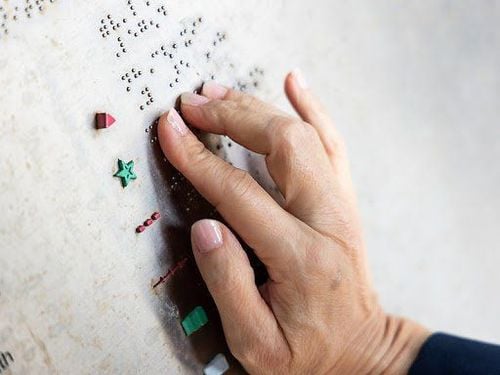
Một số ý kiến cho rằng dấu vân tay có vai trò trong sự hỗ trợ xúc giác.
2. Fingerprint recognition
Fingerprint identification is a form of biometrics, a science that uses a person's physical or biological characteristics to identify them.
Everyone has different fingerprints, no one is the same, not even twins. Fingerprints don't change, even as we age, unless the skin on our fingers is destroyed or intentionally altered with plastic surgery.
There are three main fingerprint patterns called dome, loop and fingerprint. The shape, size, quantity and arrangement of the small details in these fingerprint patterns make each fingerprint unique.
3. In which case is fingerprint used?
Identification of suspects:
Cross-checking of fingerprints available at the crime scene with other fingerprints in the police database has the potential to link a wide range of crimes together or to identify a suspect at a crime scene.
INTERPOL (International Criminal Police Organization) runs an international fingerprint database called the automatic fingerprint recognition system (AFIS).
Authorized users in member countries can cross-check records from their national fingerprint databases with data from AFIS, when they suspect this may be an international crime economic. AFIS contains more than 220,000 fingerprint records and more than 17,000 crime scene traces.
In 2019, INTERPOL made more than 1,600 identifications thanks to the increased sharing and comparison of fingerprint data by Member States.
Through the AFIS portal, the user gets the test results very quickly:
For unknown individuals known in the database, this only takes a few minutes (automatic search). For known individuals in the database, this takes about an hour (semi-automatic search). For latent prints from a crime scene, this takes about an hour (manual process). The automated process means that the database can do more than 3,000 comparisons per day. The system is also capable of searching and saving palm prints.
New ABIS (automatic biometric identification system) technology will be implemented in the future to enable faster and more accurate search. It will also integrate with a new biometrics hub to enable a streamlined search across all INTERPOL forensic databases. This will save valuable time and expose links that might otherwise go unnoticed.
Fingerprints can be obtained by electronic or manual scanning (using ink and paper). Then use the scanner to save the electronic data in the appropriate format.
Identify victims in disasters”
Along with DNA , fingerprints can play an important role in identifying victims after natural or man-made disasters such as earthquakes or bombings. This is important not only to the police investigating the incident but also to the families involved.
Above is some information about fingerprints and the effects of fingerprints. Please follow the website: Vinmec.com regularly to update many other useful information.
Please dial HOTLINE for more information or register for an appointment HERE. Download MyVinmec app to make appointments faster and to manage your bookings easily.
Reference articles: livescience.com, interpol.int






